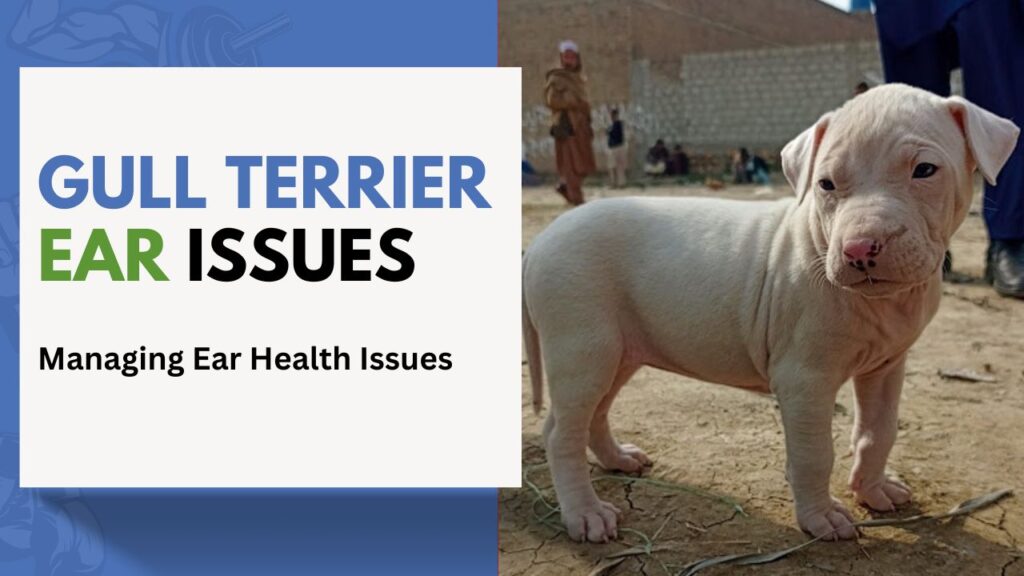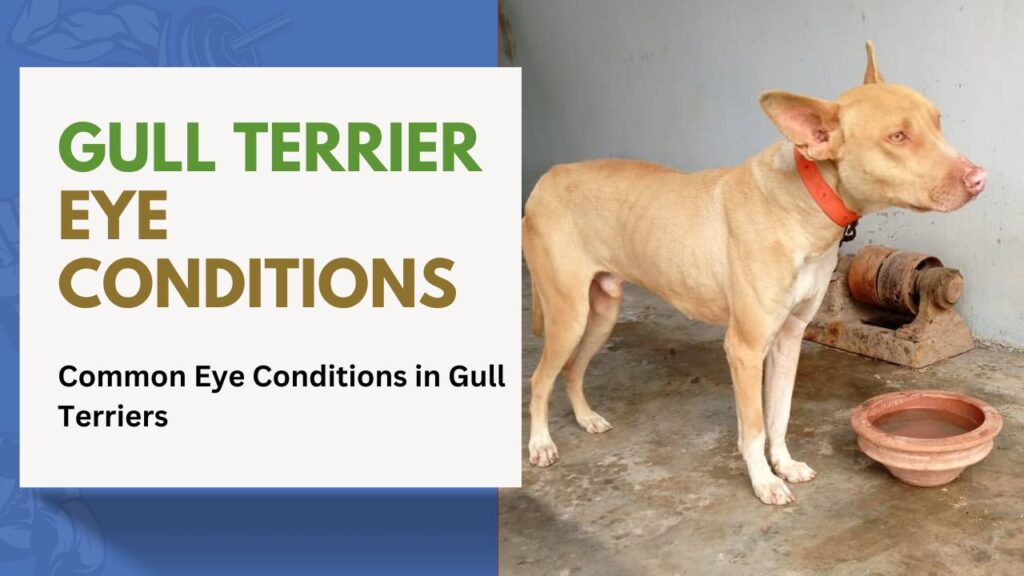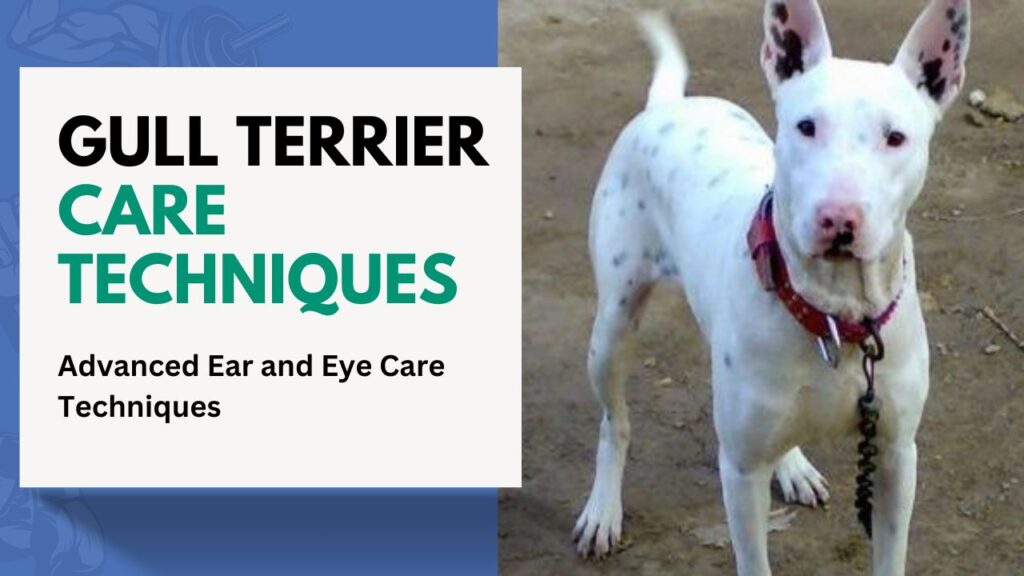Ear and Eye Care Tips for Gull Terrier Owners
Last Updated: March 28, 2024, Written by: Faisal Amin
Maintaining the ear and eye health of Gull Terriers is an essential aspect of their overall care that should not be overlooked by owners. These vital senses contribute significantly to their quality of life, allowing them to interact with their environment effectively. Unfortunately, Gull Terriers, like many breeds, are susceptible to various ear and eye…
Maintaining the ear and eye health of Gull Terriers is an essential aspect of their overall care that should not be overlooked by owners. These vital senses contribute significantly to their quality of life, allowing them to interact with their environment effectively. Unfortunately, Gull Terriers, like many breeds, are susceptible to various ear and eye issues that can affect their well-being. Recognizing the signs of these problems early and understanding how to prevent them can save your pet from discomfort and potentially severe health complications. This article delves into the anatomy of Gull Terrier’s ears, common ear problems and their signs, and practical measures for prevention.
Gull Terrier’s Ear Health
The ear health of Gull Terriers is essential for their overall well-being and comfort. The unique structure of their ears, which includes the outer, middle, and inner sections, plays a crucial role in both hearing and balance. Gull Terriers, especially those with floppy ears, are more prone to ear infections due to reduced airflow and moisture retention. Regular cleaning and maintenance, along with vigilant observation for signs of discomfort or infection, are key to preventing serious complications. Early detection and treatment of ear issues can significantly improve the quality of life for these energetic and loving dogs.
Anatomy of a Gull Terrier’s Ear
The ear of a Gull Terrier is not just a hearing organ but a complex system that requires proper care to maintain its health. Its structure, consisting of the outer, middle, and inner ear, plays a critical role in not just hearing but also in maintaining balance. Understanding this anatomy helps in identifying potential problems and applying care routines more effectively. Gull Terriers’ ears, especially those with floppy ears, are more prone to issues due to reduced airflow and increased moisture, creating an environment conducive to infections.
Signs of Ear Problems
Early detection of ear problems can prevent discomfort and more serious complications for your Gull Terrier.
- Indicators of Infection: Common signs include redness inside the ear, a foul smell, discharge, and your dog frequently scratching or shaking its head. These symptoms suggest an underlying infection that requires immediate attention.
- Symptoms of Parasites: Ear mites are a common parasite that can infest your dog’s ears, leading to intense itching, redness, and a black, coffee-ground-like discharge. Spotting these signs early and consulting a vet can ensure quick and effective treatment.
- Unusual Behavior: Persistent pawing at the ear or tilting the head to one side can also indicate discomfort or an ear issue.
- Loss of Balance or Hearing: Any changes in your dog’s balance or responsiveness to auditory cues might signal an ear health problem, necessitating a vet visit.
Preventing Ear Issues
Prevention is key to maintaining the ear health of your Gull Terrier, involving regular care routines and understanding environmental factors that could pose risks.
- Regular Cleaning Techniques: Incorporating ear cleaning into your regular grooming routine can help prevent ear infections. Use a vet-recommended ear cleaner and gently wipe the outer part of the ear canal without inserting anything deep into the ear.
- Check and Clean After Activities: After swimming or bathing, ensure your dog’s ears are dry and clean to prevent moisture buildup, which can lead to infections.
- Regular Vet Check-ups: Routine veterinary examinations can help catch and address any ear health issues before they become severe.
- Awareness of Allergies: Many ear problems are related to allergies. Being aware of your dog’s allergies and managing them can significantly reduce the risk of ear infections.
Managing Ear Health Issues

Gull Terrier owners know the joy these energetic and loyal dogs bring into their lives. However, like all breeds, they come with specific health needs, especially concerning their ears. Proper ear care is crucial to prevent infections and parasites that can cause discomfort or even lead to more severe health issues. Understanding how to manage these concerns effectively is essential for every Gull Terrier owner. Below, we delve into treating ear infections and dealing with parasites, providing actionable tips for maintaining your dog’s ear health.
Treating Ear Infections
Ear infections are a common issue in dogs, particularly in breeds with floppy ears like the Gull Terrier. Recognizing the signs of ear infections early can prevent more severe complications. Symptoms include scratching, redness, and an unpleasant odor. Treatment typically involves medication and home care, but the approach can vary depending on the infection’s severity and cause.
When to See a Vet
- Persistent scratching or pawing at the ears.
- Visible signs of discomfort or pain when the ears are touched.
- Any discharge or foul odor coming from the ears.
- Excessive head shaking or tilting.
Medication and Home Care
- Follow the vet’s prescription for ear drops or oral medication strictly.
- Gently clean the ear with a vet-recommended solution to remove debris.
- Keep the ear dry and well-ventilated; avoid water getting inside during baths.
- Regularly check the ears for signs of infections or improvement.
Dealing with Parasites
Parasites like mites and ticks can cause significant discomfort and lead to infections if not promptly addressed. Gull Terriers, with their adventurous nature, are particularly susceptible to these pests. Preventive measures and regular check-ups play a crucial role in managing this issue. Here are steps for effective parasite control and the importance of routine veterinary visits.
Effective Parasite Control
- Use vet-recommended anti-parasite treatments regularly.
- Maintain a clean and hygienic environment to prevent infestations.
- Check your dog’s ears frequently for signs of parasites.
- Groom your dog regularly to catch any early signs of trouble.
Importance of Regular Check-Ups
- Early detection of parasites before they cause more severe issues.
- Tailored advice from your vet on preventing parasites in your area.
- Regular ear examinations to catch any abnormalities early.
- Opportunity for vaccinations and other general health checks.
Gull Terrier’s Eye Health
The bright and alert eyes of a Gull Terrier not only reflect their keen spirit but are also windows to their health. Eye issues, if not addressed promptly, can impair vision or lead to more serious conditions. Familiarity with the anatomy of their eyes, signs of problems, and common conditions can equip owners to safeguard their pets’ sight. Here, we explore the anatomy, signs of eye problems, common conditions, and how to manage them through preventive measures and treatment options.
Anatomy of a Gull Terrier’s Eye
Gull Terriers have distinctive eyes that are prone to specific conditions due to their genetic makeup. Their eyes are designed to be expressive but are also susceptible to irritants and injuries. Understanding the structure of their eyes helps in recognizing signs of distress or disease. Regular checks are important to monitor their eye health and ensure they remain bright and clear.
Signs of Eye Problems
Eye issues can rapidly deteriorate if not treated, making early recognition vital. Here’s what to watch for.
Recognizing Infection Symptoms
- Redness or swelling around the eye area.
- Excessive tearing or discharge.
- Squinting or blinking more than usual.
- The dog rubbing its face against furniture or the floor.
Identifying Injury or Trauma
- Any noticeable scratches or abrasions on the eye surface.
- Changes in the eye’s appearance, such as cloudiness or discoloration.
- Sudden onset of light sensitivity.
- Avoidance of touch or reluctance to open the eye fully.
Common Eye Conditions in Gull Terriers

Gull Terriers may be predisposed to certain eye conditions, including conjunctivitis, corneal ulcers, and glaucoma. Knowing these can help in taking swift action.
Preventive Measures
- Regularly clean the area around the eyes with a soft, damp cloth.
- Ensure their living environment is free from sharp objects that can cause injury.
- Protect their eyes from harsh chemicals and shampoos during bathing.
- Schedule regular eye exams with the vet to catch any issues early.
Treatment Options
- Follow the vet’s guidance on administering prescribed eye drops or ointments.
- In cases of injury, seek immediate veterinary attention to prevent complications.
- For genetic conditions, discuss long-term management strategies with your vet.
- Consider dietary supplements that support eye health, as recommended by your veterinarian.
Managing Eye Health Issues
Routine Eye Care Practices
Regular eye care is vital for preventing infections and injuries in Gull Terriers. Start by inspecting your dog’s eyes daily for any signs of redness, discharge, or irritation. A gentle wipe with a soft, damp cloth can remove any crust or debris. Establishing this as a daily routine helps in early detection of potential problems.
Daily Cleaning and Maintenance
For daily eye maintenance, use a clean, soft cloth or a cotton ball dampened with warm water. Gently wipe away any dirt or discharge from around the eyes. It’s important to use different cloths for each eye to prevent cross-contamination. This simple practice keeps their eyes clear and prevents infections.
Protecting Eyes from Environmental Hazards
Protect your Gull Terrier’s eyes from dust, wind, and harsh chemicals. During walks, keep them away from potentially harmful plants and objects. Consider dog goggles if you’re in a particularly dusty area or if your dog hangs their head out of the car window. Such precautions can prevent injuries and infections.
Treating Eye Infections and Injuries
When signs of eye infections or injuries appear, immediate action is required. Symptoms include excessive tearing, redness, or swelling. Clean the area gently and avoid using over-the-counter medications without veterinary advice. Early treatment prevents complications.
When to Seek Veterinary Care
If you notice any abnormalities in your dog’s eyes, such as cloudiness, excessive tearing, or persistent redness, it’s time to consult a veterinarian. Professional diagnosis and treatment are crucial for eye infections and injuries. Delays can lead to more serious conditions or even loss of vision.
Follow-up Care and Monitoring
After receiving treatment, closely monitor your dog’s eye health. Follow the vet’s instructions for administering medication and returning for follow-up visits. Ensuring the full course of treatment is completed is key to your pet’s recovery and long-term eye health.
Ear and Eye Care Routine
Establishing a Care Routine
A consistent ear and eye care routine is essential for your Gull Terrier’s health. Incorporate eye and ear checks into your daily pet care activities. This not only helps in maintaining their health but also strengthens your bond with your pet. Regular care can prevent many common problems.
Schedule for Cleaning and Check-ups
Plan a regular schedule for ear and eye cleaning, ideally once a week. Use this time to check for any signs of infection or irritation. Regular veterinary check-ups, at least once a year, are also crucial for maintaining your pet’s ear and eye health. These visits can catch potential issues early.
Tips for Stress-Free Care
Introduce ear and eye care routines gradually to your Gull Terrier to make them comfortable. Use treats and gentle reassurance to create a positive experience. Always be gentle and patient, ensuring the process is stress-free for both you and your pet. This approach encourages cooperation and eases future care sessions.
The Role of Diet in Ear and Eye Health
A balanced diet plays a significant role in maintaining your Gull Terrier’s ear and eye health. Nutrients like omega-3 fatty acids, vitamins A, C, and E, and antioxidants support healthy vision and can prevent ear infections. Consult with your vet to ensure your pet’s diet meets these nutritional needs.
Nutritional Supplements
Consider adding nutritional supplements to your dog’s diet to support ear and eye health. Omega-3 fatty acids, for instance, can help reduce inflammation and support eye health. Always consult with your veterinarian before adding any supplements to your pet’s diet to ensure they are necessary and appropriate.
Foods to Boost Health
Incorporate foods rich in antioxidants and vitamins into your Gull Terrier’s diet. Carrots, sweet potatoes, and leafy greens support eye health, while lean meats and fish provide the necessary nutrients for overall well-being. A balanced diet tailored to your dog’s specific needs is essential for maintaining their health and vitality.
Advanced Ear and Eye Care Techniques

The health and happiness of your Gull Terrier involves more than just love and regular walks. A critical aspect of their well-being revolves around proper ear and eye care. This guide delves into advanced care techniques, including both surgical and non-surgical interventions, and highlights the latest innovations in veterinary care. By understanding these advanced techniques and the importance of keeping abreast of veterinary advancements, you can ensure that your beloved pet receives the best possible care. With the right approach and knowledge, maintaining your Gull Terrier’s ear and eye health can be an integral part of their overall care routine.
Surgical and Non-Surgical Interventions
When it comes to the health of your Gull Terrier’s ears and eyes, various interventions can make a huge difference. Surgical options might include procedures to correct congenital issues or to treat injuries and infections that do not respond to conventional treatments. Non-surgical interventions, such as medication or special diets, often serve as the first line of defense against ear and eye problems. Understanding the range of available treatments helps you make informed decisions about your pet’s health.
Common Procedures
Among the common surgical procedures are cataract removal and corrective surgeries for entropion, where the eyelid rolls inward. Non-surgical treatments might include antibiotic drops for infections or anti-inflammatory medications for swelling. It’s essential to consult with a veterinarian to choose the right approach based on your dog’s specific needs. Early intervention is crucial to prevent more serious complications.
Recovery and Post-Care
Recovery and post-care are pivotal for the success of any ear or eye treatment. Following surgery, your Gull Terrier may need to wear a cone to prevent them from scratching or rubbing the affected area. Adherence to medication schedules and follow-up appointments is crucial. Your vet will provide detailed instructions on how to care for your pet during the recovery period, ensuring a swift and smooth healing process.
Innovations in Veterinary Care
Veterinary medicine is constantly evolving, offering new hope for the treatment of ear and eye conditions. Breakthroughs in technology and medicine have led to less invasive treatment options and quicker recovery times. Advances in diagnostic tools allow for early detection and treatment of conditions that could potentially lead to blindness or deafness. Staying informed about these innovations ensures that your Gull Terrier has access to the best possible care.
New Treatments on the Horizon
Exciting new treatments are being developed, such as gene therapy for hereditary eye diseases and advanced medications for ear infections that resist traditional antibiotics. These innovations promise to revolutionize the way we approach ear and eye care in pets. By working closely with your veterinarian, you can explore these cutting-edge options. Keeping an eye on the future of veterinary care can significantly impact the quality of life for your Gull Terrier.
The Importance of Veterinary Advances
The advancements in veterinary medicine not only improve treatment outcomes but also reduce the discomfort and stress associated with ear and eye conditions. These developments reflect a growing understanding of the unique health needs of different breeds, including Gull Terriers. Embracing these advances is a testament to the commitment of pet owners and veterinarians to ensure the well-being of our furry companions. It’s an exciting time for pet care, with promising new treatments enhancing the lives of pets and their owners.
Explore Categories:
Conclusion
Caring for your Gull Terrier’s ears and eyes is a multifaceted process that benefits greatly from advancements in veterinary care. From surgical and non-surgical interventions to the latest in medical innovations, the options for maintaining your pet’s health are more effective and accessible than ever. By staying informed and working closely with your veterinarian, you can navigate the complex landscape of ear and eye care, ensuring your Gull Terrier enjoys a happy, healthy life. Remember, your vigilance and proactive care are key to preventing and treating ear and eye issues, highlighting the importance of a comprehensive approach to your pet’s health.
